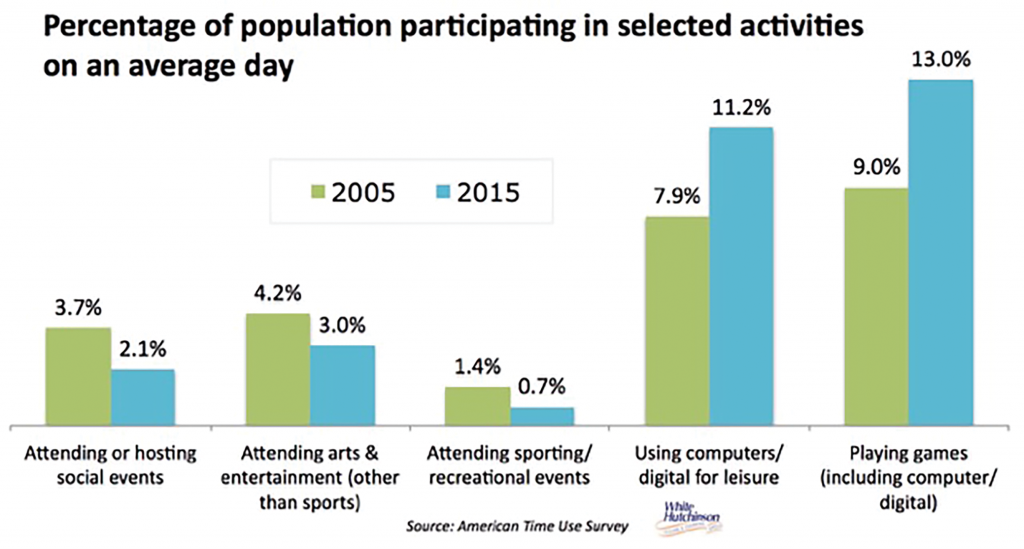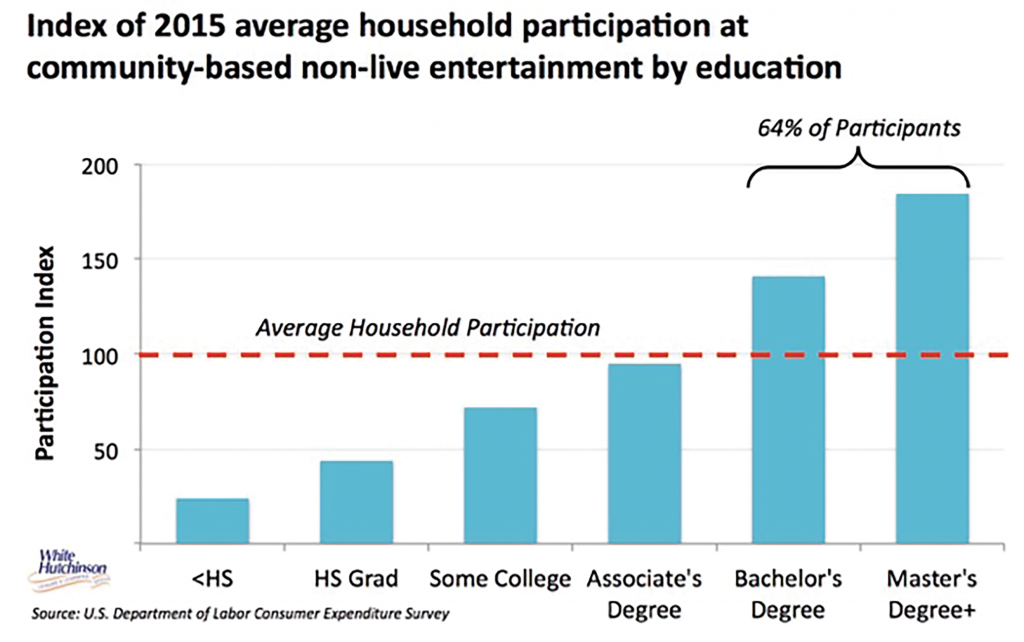Change Is Coming Fast
It’s Going to Take a New Business Model to Attract & Keep Consumers

By Randy White, CEO/White Hutchison Leisure & Learning Group
It wasn’t all that long ago that film canisters, taxi medallions, CDs, video rental stores and book stores (among others) dominated their respective industries. Much of retail is now going down that same road due to e-commerce disruption. We can thank those histories for this indispensable lesson:
Survival in the 21st Century demands new business models.
Another variation of this lesson for existing businesses is this revised truism:
If you keep on doing what you’re doing, you’ll keep STOP getting what you’re getting.
But, if you’re in the community-based entertainment industry (CBE), which includes FECs and bowling- and laser tag-based venues, you might say you’re not worried as people will always go out. There’s definitely some truth to that. However, that doesn’t mean they’ll continue to frequent the same spots, nor that they’ll go out as often, nor spend as much money when they do.
 And that’s exactly what’s happening in the 21st Century. Customer consumption and spending behaviors for out-of-home entertainment are changing dramatically, predominately as a result of disruptive consumer digital technologies. As a result, the old CBE models are becoming obsolete and being replaced by new models that address the contemporary consumer and the growing use of screen-based technologies. Unfortunately, most existing CBE business and new developers don’t see this handwriting on the wall and continue to only make incremental changes to yesterday’s business models.
And that’s exactly what’s happening in the 21st Century. Customer consumption and spending behaviors for out-of-home entertainment are changing dramatically, predominately as a result of disruptive consumer digital technologies. As a result, the old CBE models are becoming obsolete and being replaced by new models that address the contemporary consumer and the growing use of screen-based technologies. Unfortunately, most existing CBE business and new developers don’t see this handwriting on the wall and continue to only make incremental changes to yesterday’s business models.
Back in the 20th Century, the world didn’t change so fast. But then along came the Internet, social media and the smartphone. Due to their widespread adoption, we now live in an era of rapid change. Today we have digitally literate consumers of all ages spending more and more time with screen-based digital entertainment and socialization. Now we have virtual and augmented reality emerging as new digital platforms that will further affect entertainment consumption and socialization.
All this consumer technology is rapidly shifting both socialization and entertainment from out-of-home to at-home. Our company’s analysis of multiple surveys of consumer behavior and spending shows there’s a long-term trend underway that started more than a decade ago where the amount of time, the participation rate and the spending by Americans on screen-based entertainment and socialization is increasing while it’s on the decline for out-of-home leisure. Today, compared to the past, people are going out less often from their homes.
A June 2016 Ypulse survey found that almost three out of four Millennials and teenagers would now rather stay in on the weekends than go out at night (72%). Many teens and young adults are more than happy to live in the binge-watching Netflix-and-chill zone at home than venture out. In fact, binge watching has become a very social group activity for many Millennials. A good night is fast becoming more about couch time than going out on the town. Welcome to Generation Homebody!
What all this means is yesterday’s CBE models’ ability to attract people out of their homes to spend is fast becoming obsolete, so obsolete that incremental improvements can’t address the root causes of that obsolescence.
It used to be that CBE venues considered entertainment as the primary reason that consumers attended. Most still do. Today, that thinking will only result in being left behind by a world and consumers who have changed and continue to do so at accelerating speed.

We now have far too many other entertainment options available on digital screens and in the home, and all are so much more convenient and less expensive, often free. Digitally literate consumers are just as comfortable socializing and being entertained on their screens as they are in the real world. Today, consumers are far less motivated to leave home for entertainment or to socialize. This is a sea change for leisure behaviors.
Tweaking yesterday’s CBE business model for the modern leisure consumer is destined for failure. The industry’s conventional wisdom and its paradigms don’t fit with the times and will be even more of a mismatch in the near future. It now takes a completely new business model to attract today’s digitally literate consumers with their many on-screen entertainment and social options and their changed expectations and values.
There’s now an emerging new business model replacing the traditional CBE, including FECs of all types. To attract consumers out of the comfort of their homes, what this model does is place real world socialization first, food and drink second and the entertainment only comes in third. It’s no longer primarily about the entertainment, although it is an important part of the mix to help facilitate socialization.
In addition, this new business model addresses consumers’ desire for new and unique experiences, those that are shareworthy on social media to gain social capital. The new business model targets adults, not families. And it targets higher socioeconomic households instead of the shrinking-and-discretionary-expenditure-challenged middle class the older models catered to. Bachelor’s Degree and higher educated households now account for almost two-thirds of all participation at community entertainment venues.
To attract these higher socioeconomic guests demands a much higher quality experience, including design, ambiance, hospitality and foodie-worthy food and drink. Food and drink that features flavor and cultural adventurism is now a major prerequisite. The vast majority of higher socioeconomic guests are college educated, so they are often seeking an experience that offers them the opportunity to discover and learn something new. We call this new business model a Community Leisure Venue (CLV) to take all the emphasis off the entertainment.
What has been the conventional industry wisdom for years no longer works as a sustainable model. Old school CBEs and FECs that offer a much more limited and shallower experience with an emphasis on entertainment are on the road to extinction while a new species, the CLV, is evolving to take their place. That’s where we’re taking all our client’s projects. It’s a model that will have long-term financial sustainability.
Yogi Berra’s truism sure fits the times: “The future ain’t what it used to be.”
The White Hutchinson Leisure & Learning Group is a multi-disciplinary firm specializing in feasibility, concept and brand development, design and consulting for entertainment facilities. Over the past 26 years, the company has worked for over 500 clients in 32 countries, and won 16 first-place design awards. It publishes an occasional Leisure eNewsletter and Tweets (@whitehutchinson); Randy blogs. He is also a founder, co-regent and presenter at Foundations Entertainment University, now in its 13th year. Randy can be reached at 816/931-1040, ext. 100, or via the company’s website at www.white hutchinson.com. © 2015 White Hutchinson Leisure & Learning Group
